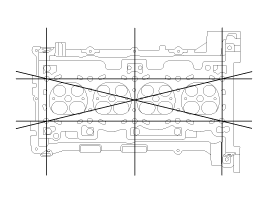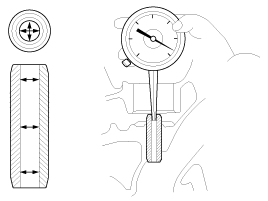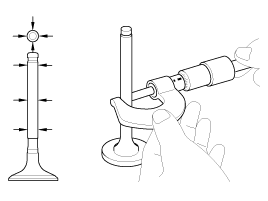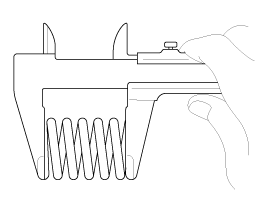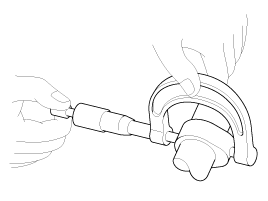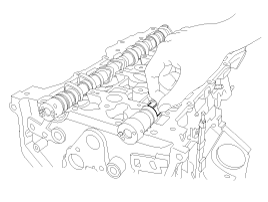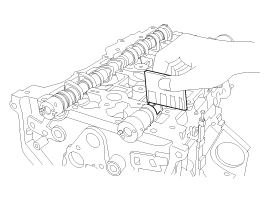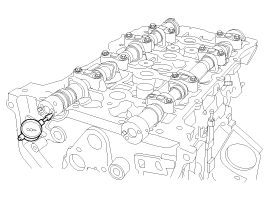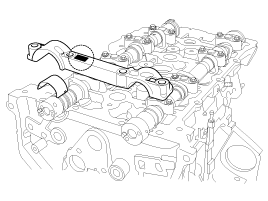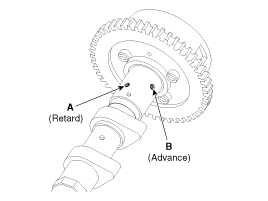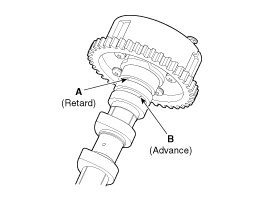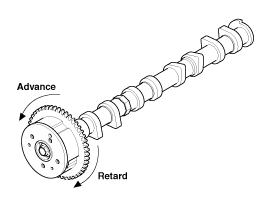Inspect for flatness.
Using a precision straight edge and feeler gauge, measure the surface the contacting the cylinder block and the manifolds for warpage.
Flatness of cylinder head gasket surface
Standard : Less than 0.05mm (0.0019in.) for total area
Less than 0.02mm (0.0007in.) for a section of 100mm (3.9370in.) X 100mm (3.9370in.)
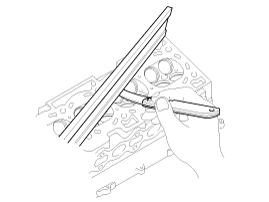
Flatness of manifold mounting surface (Intake/Exhaust)
Standard : Less than 0.10mm (0.0039in.)
